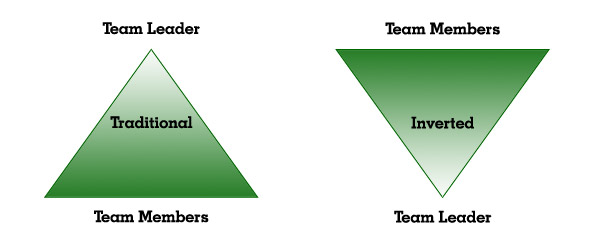ODDBLOG

January 09, 2015
Appropriate Team Leadership Behaviour
Flexing leadership style to accommodate evolving teams
Before you are a leader, success is all about growing yourself.
When you become a leader, success is all about growing others. Jack Welch
The need for flexibility
There are many leadership and team models and all argue for flexibility in leadership style. Some suggest that as a team evolves, its leadership style should move from a directive style to a delegating style. Others advocate matching leadership style to the experience of team members and their readiness to undertake certain tasks or to enter new phases of a project.
Nonetheless, it is generally accepted that flexibility in leadership style is essential and that one style does not fit all circumstances or individuals.
The need for open dialogue
An effective team leader will understand this requirement for flexibility and, in evaluating his/her performance, will examine not only the leadership style adopted but the appropriateness of that style.
In order to evaluate effectively, the leader will need information and feedback from team members. The quality of this information will rely on open dialogue between the leader and team members and in the leader having the confidence to ask “is there anything I can do to improve my leadership of this team?”
Evolving styles
When teams are initially formed or take on a new project or set of objectives an effective leader will focus on being directive so as to ensure that team members understand goals, role outcomes and success criteria.
Subsequently, as the team (or project) progresses through its life cycle—and assuming the leader performs the many tasks of leadership appropriately—the team should become more self-managing and self-directing. A directive and controlling style throughout the whole life cycle of a project (beyond the initial stages) will not only frustrate a team, it will prevent the growth and development of that team.
Furthermore, a leader must always be aware that while the team as a whole may call for a particular overall leadership style, some individual members may, on occasion, need to experience leadership differently. For example, the delegating style used with experienced and long-serving members may not be appropriate for new members who will need more direction and support. Meanwhile in the case of a poorly performing team member, the leader may need to revert to a coaching style with that individual.
Adopting an appropriate outlook
In adopting the appropriate style(s) team leaders should perceive themselves in an inverted hierarchy. Rather than taking position at the top of a pyramid and being supported by the team members, they should see themselves at the bottom supporting the team members and their performance.

In such a position, the management of coaching, performance, goals, communications, up-skilling, planning and evaluation becomes the natural task of the leader. This in turn will lead to a natural adoption of the appropriate style of leadership for the team and its individual team members helping drive overall team performance.
Flex for success
The leader’s job is to ensure that nothing gets in the way of the team’s performance by supplying the strategy and structure for successfully delivering quality output and customer service.
Achieving success involves a balancing act of leadership styles avoiding over-supervision and under-supervision. One leadership style does not fit all and a team leader will have to flex his/her style to accommodate the team as it evolves. Tasks and power must be delegated to ensure that the team can forge ahead in achieving its goals. However, the leader must possess the openness and awareness as well as flexibility of style to ensure that the needs of individual team members are met.
